Index
Introduction
Myrtle, scientifically known as Myrtus, is a charming plant that adds a touch of elegance to gardens and landscapes. Originally from the Mediterranean, this perennial plant is appreciated not only for its shiny, aromatic leaves, but also for its delicate flowers and edible fruit. Its timeless beauty and versatility make it a popular choice for both novice gardeners and expert landscapers.
Meaning of the Myrtle
In addition to its attractive aesthetics, the myrtle carries symbolic meanings. Traditionally associated with fertility, love and immortality, this plant has played important roles in various cultures throughout history. Its refreshing aroma and evergreen leaves symbolize persistence and vitality. By growing myrtle, you not only beautify your surroundings, but also connect with a botanical tradition rich in symbolism.
| Common Name | Myrtle |
|---|---|
| Botanical Name | Myrtus |
| Family | Myrtaceae |
| Plant Type | Shrub |
| Adult Size | Up to 3 meters high |
| Sun exposure | Full sun to half shade |
| Soil type | Well-drained, fertile |
| soil pH | Slightly acidic to neutral (6.0-7.0) |
| Flowering time | Spring to summer |
| Flower color | White, pink or violet |
| Native Area | Mediterranean regions and Asia Minor |
| Toxicity | Not considered toxic |
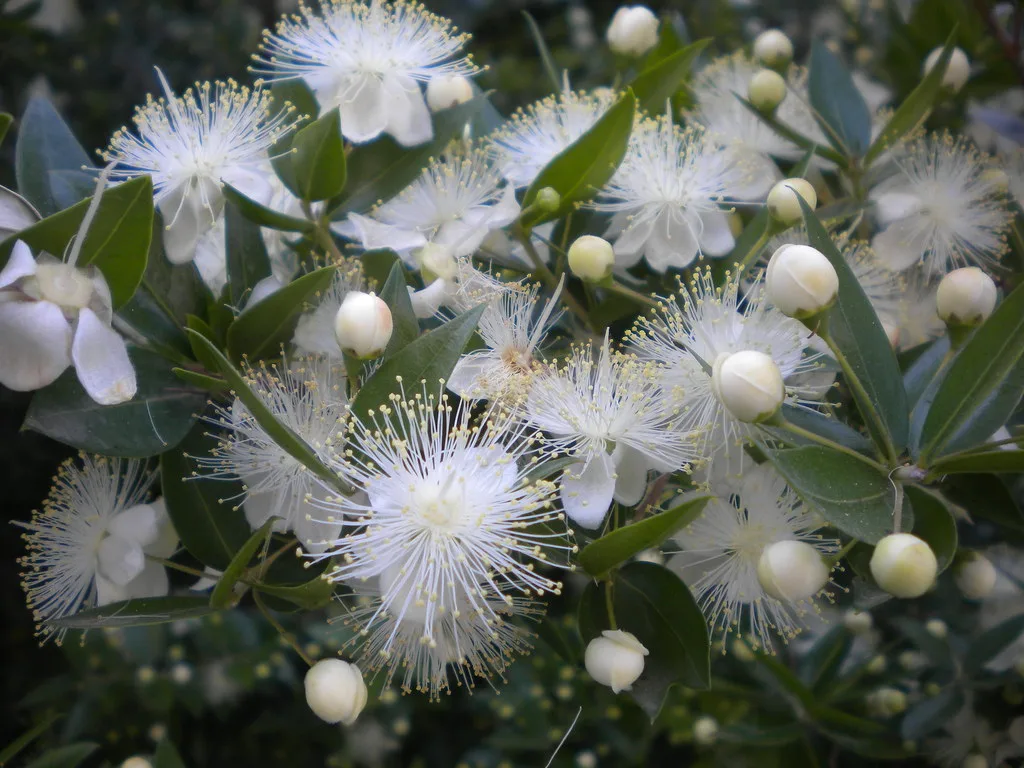
How to Care for Myrtle
Discover the secrets to keeping your Myrtle (Myrtus) healthy and lush by carefully following these specific guidelines:
Light
Adequate light: Myrtle thrives in places with sun exposure ranging from full sun to half shade. Make sure you provide the right amount of light to encourage healthy growth and abundant flowering.
Soil
Well-drained soil: Make sure the soil is well-drained and fertile. Myrtle appreciates soils that allow adequate water to pass through, avoiding excessive accumulation that could lead to root rot.
Watering
Moderate watering: Maintain a moderate watering routine, allowing the soil to dry out superficially between waterings. Avoid overwatering, as myrtle prefers drier conditions compared to constantly moist soil.
Temperature and humidity
MildClimate: Myrtle prefers mild climates. Keep the plant in moderate temperatures, avoiding extremes of heat or cold. As for humidity, a slightly damp atmosphere is favorable for its development.
Fertilizing
Regular fertilization: Fertilize the myrtle during spring and summer, using a balanced fertilizer. This will promote healthy growth and ensure that the plant is well nourished to produce lush flowers.
By following these care guidelines, you’ll be giving your Myrtle the ideal conditions to thrive and beautify your garden with its characteristic exuberance and aroma.
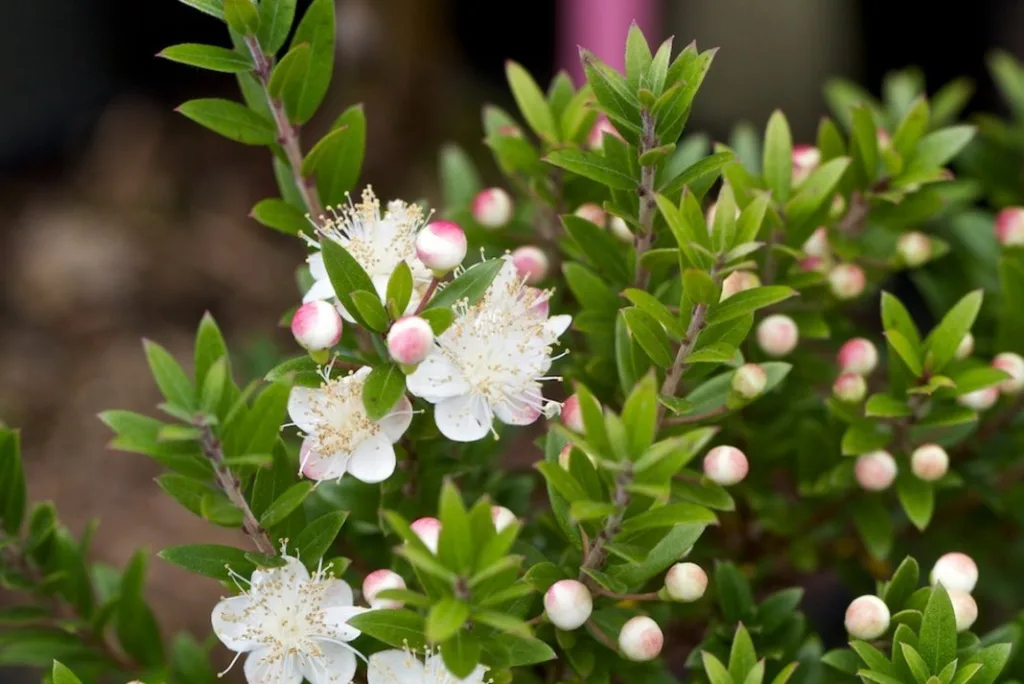
How to Make Myrtle Cuttings
Propagating myrtle can be a rewarding experience. Follow these steps to create healthy cuttings:
Choosing the material:
Opt for healthy, disease-free branches to ensure successful propagation.
Precise cutting:
Use sharp pruning shears to make clean cuts in segments of about 10 to 15 centimeters.
Preparing the Substrate:
Plant the cuttings in a light, well-drained substrate mixed with sand to ensure good aeration.
Suitable environment:
Place the seedlings in a place with filtered light and keep the soil moist, not soggy.
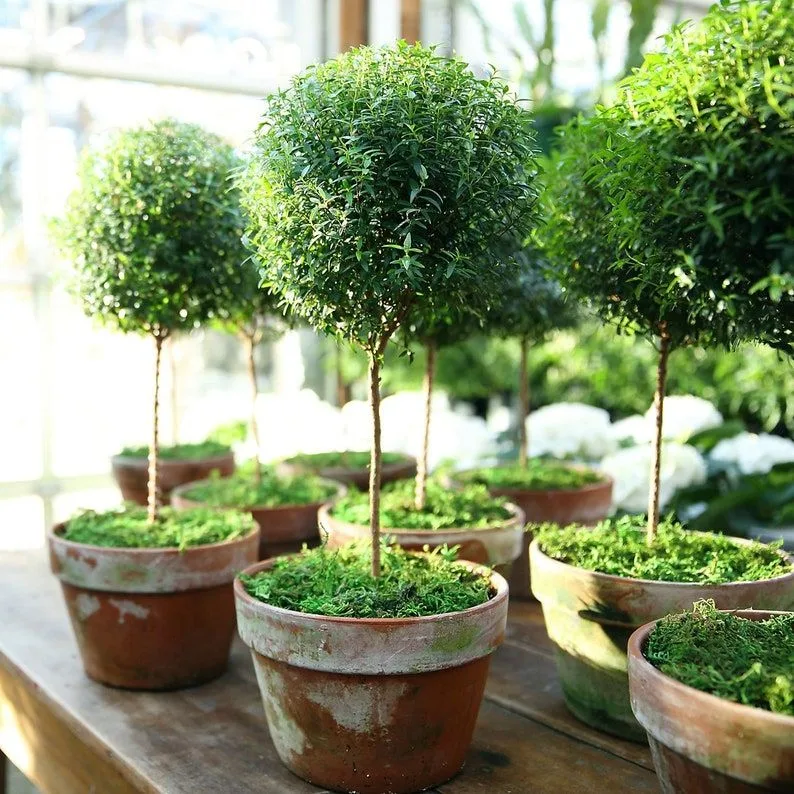
How to Plant Myrtle
When planting your Myrtle, follow these guidelines to establish a healthy plant:
Site selection:
Opt for a spot with good sun exposure and protected from strong winds.
Preparing the soil:
Make sure the soil is well-drained and enriched with organic matter.
Proper planting:
Dig a hole slightly larger than the seedling’s root ball, keeping the plant at the same depth as it was in the pot.
Initial watering:
Carry out an initial watering to help the plant settle into its new environment.
By following these guidelines, you will be taking the first essential steps towards successfully propagating and planting your myrtles, guaranteeing a garden full of beauty and fragrance.
Most common pests and diseases
Keep your Myrtle (Myrtus) problem-free by knowing the pests and diseases that can affect this enchanting plant:
1. Mealybugs:
- Symptoms: White spots on the leaves.
- Solution: Manual cleaning and application of neem oil.
2. Aphids:
- Symptoms: Curled leaves and damaged shoots.
- Solution: Wash the leaves with water or use insecticidal soap.
3. Root rot:
- Symptoms: Dark and smelly roots.
- Solution: Remove affected roots and replant in well-drained soil.
4. Rust:
- Symptoms: Rust-colored spots on the leaves.
- Solution: Remove affected leaves and apply fungicide.
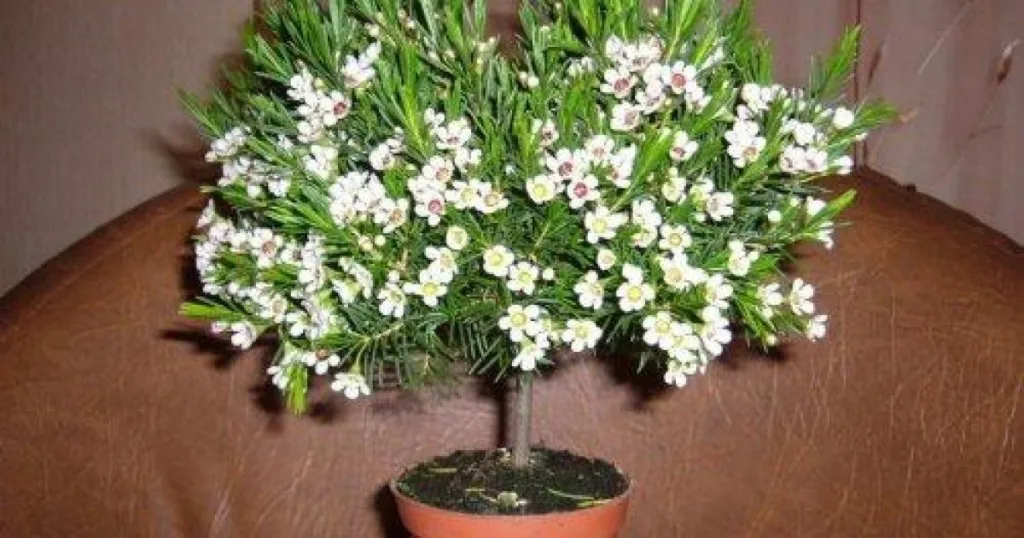
Common problems and their solutions
1. Yellowing of the leaves:
- Cause: Excess moisture in the soil.
- Solution: Adjust irrigation and improve soil drainage.
2. Premature leaf fall:
- Cause: Water stress or extreme weather conditions.
- Solution: Monitor watering and protect against adverse weather conditions.
3. Lack of Flowers:
- Cause: Lack of adequate sunlight.
- Solution: Relocate the plant to a sunnier area.
By paying attention to these signs and adopting preventative measures, you can ensure that your Myrtle remains healthy and vibrant, tackling challenges effectively.
Intriguing facts
Discover fascinating facts that make the Myrtle (Myrtus) a captivating addition to your garden:
1. Timeless Aroma:
Myrtle is known for its refreshing and long-lasting aroma, making it a popular choice for the production of essential oils and perfumes.
2. Historical Symbolism:
Throughout history, myrtle has been a symbol of love, marriage and purity in various cultures, including ancient Greece and Rome.
3. Culinary Uses:
Its fruits, known as myrtles or myrtle, are edible and are used in some regions to produce jellies and liqueurs.
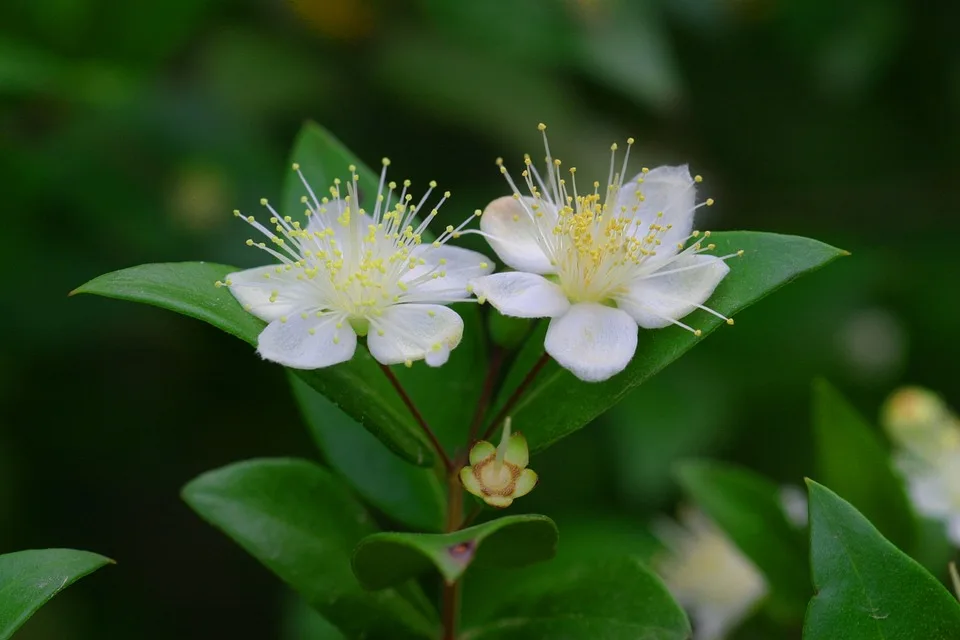
Myths debunked
Debunk some common myths surrounding myrtle, allowing for a clearer understanding of this remarkable plant:
1. “Myrtle is Resistant to All Pests”:
Truth: Although it is resistant, myrtle is not immune to pests. Regular monitoring is essential.
2. “Myrtle Needs Lots of Water”:
Myth: Myrtle prefers slightly moist soil, but overwatering can lead to root rot.
3. “All Myrtles are the Same”:
Myth: There are several varieties of myrtle, each with different characteristics in terms of size, color and aroma.
By exploring these curiosities and debunking myths, you delve deeper into the unique universe of the myrtle, understanding not only its botanical characteristics, but also the stories and traditions that make it truly special.
Conclusion
By exploring the various aspects of Myrtle (Myrtus), from its engaging curiosities to debunked myths, we delve into a universe rich in meaning and beauty. This plant, with its delicate flowers, captivating aroma and historical symbolism, becomes more than just an addition to the garden – it is a connection to ancient traditions and a testament to its resilience over time.
By growing myrtle, you not only invest in a lush plant, but also become part of a botanical narrative that transcends generations. Whether appreciating its culinary uses, unraveling myths or simply absorbing its timeless beauty, Myrtle stands out as an enchanting choice for those seeking a garden full of meaning and lasting elegance. By allowing myrtle to flourish in your space, you celebrate not just a plant, but a living heritage that continues to enchant and inspire.
Frequently Asked Questions
Can you eat myrtle fruit?
Yes, the fruits of the myrtle tree are edible. They can be eaten fresh, added to salads or used to make jams, liqueurs and other culinary products.
What does a myrtle tree look like?
The myrtle tree, or the plant itself, is an evergreen shrub with dark green leaves, white or pink flowers and small fruits. Myrtle is usually compact and dense, reaching up to 3 meters in height. Its leaves give off a characteristic aroma when crushed.
What is myrtle and what is it used for?
Myrtle, or Myrtus, is a versatile ornamental plant with historical symbolic meanings. As well as adorning gardens, its fruits are used in cooking, its essential oils have fragrant applications, and historically it has been associated with symbols such as love, purity and immortality in various cultures. Myrtle serves as a decorative, aromatic and even culinary element in different contexts.







